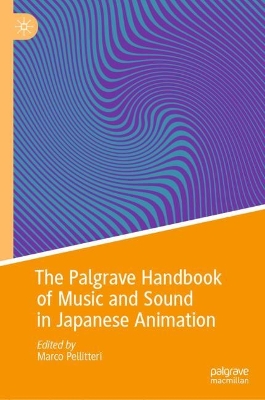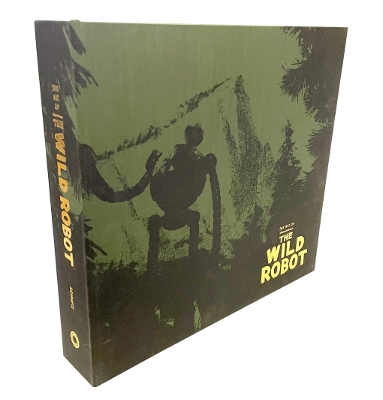Palgrave Handbook of Music and Sound in Japanese Animation
 portes grátis
portes grátis
Palgrave Handbook of Music and Sound in Japanese Animation
Pellitteri, Marco
Springer Verlag, Singapore
09/2024
1040
Dura
9789819704286
15 a 20 dias
Descrição não disponível.
About this book.- Praises for The Palgrave Handbook of Music and Sound in Japanese animation.- Acknowledgements.- Editorial Note .- List of Contributors.- List of Images and Tables.- Foreword. Birth and structure of the Handbook.- Introduction. Tool kits / 0: Presenting Japanese animation and a summary of selected sources on music and animation.- Part I. Early history, theoretical framing, and practice of music and sound in Japanese animation.- Chapter 1. Tool kits / 1: Hearing moods, emotions, pictures. A basic overview on the rhetoric of music.- Chapter 2. Tool kits / 2: Key concepts of music language in anime.- Chapter 3. Tool kits / 3: A short outlook of anison from 1963 to the 21st century.- Chapter 4. Tool kits / 4: Mapping anime's voice acting industry.- Chapter 5. Early history / 1: Introducing European music to Meiji Japan.- Chapter 6. Early history / 2: The early period of music in Japanese animation. From the 1930s to the advent of Toei Doga (1956).- Chapter 7. Early history / 3: Shiftingpractice, industry, and ideology in the first decade of TV anime songs (1962-72). From Toriro Miki to Michiaki Watanabe.- PART II. Music and sound for animation in Japan from the 1970s to the 2010s.- Chapter 8. Scoring Japan's pasts and futures / 1: Legends, folklore, monsters, and his-torical drama.- Chapter 9. Scoring Japan's pasts and futures / 2: Drama, trauma, and sonic eclecticism in mainstream music scores for giant armour-themed and SF animated se-ries of the 1970s.- Chapter 10. Scoring Japan's pasts and futures / 3: The soundtrack of Shunsuke Kikuchi for UFO Robo Grendizer. Composition and selection criteria.- Chapter 11. Transcultural musical encounters / 1: Jo Hisaishi and Yuji Nomi. Variation, citation, and emulation.- Chapter 12. Transcultural musical encounters / 2: A cultural history of Dvorak's Largo from Meiji era to anime.- Chapter 13. Transcultural musical encounters / 3: Koji Morimoto, Yoko Kanno, and the Zagreb school of animation.- Chapter 14. Transcultural musical encounters / 4: The power of alternative music in Japanese animation. Can the beats and vibes of anime change the world?.- Chapter 15. Authorship in music and sound design / 1: Isao Takahata and his music di-rection.- Chapter 16. Authorship in music and sound design / 2: Geino Yamashirogumi and Akira.- Chapter 17. Authorship in music and sound design / 3: The music and method of Kenji Kawai.- Chapter 18. Authorship in music and sound design / 4: Koji Yamamura and Satoshi Kon.- Chapter 19. Authorship in music and sound design / 5: Tenmon and his musics for Ma-koto Shinkai's films.- Chapter 20. Authorship in music and sound design / 6: Four outstanding cases in the anime industry, 1995-2016.- Chapter 21. Extra-musical sonic environments / 1: Voice actresses performing boy characters. Historical, political, social, and cultural significance in postwar Japan.- Chapter 22. Extra-musical sonic environments / 2: Sonic embedment and spatial "worlding". Soundscapes, psychoacoustics, and post-human sonics inShin-seiki Evangelion.- Part III. Musics, songs, and voices for Japanese animation beyond Japan.- Chapter 23. Re-written songs, musics, and dubbing for anime / 1: United States.- Chapter 24. Re-written songs, musics, and dubbing for anime / 2: Italy.- Chapter 25. Re-written songs, musics, and dubbing for anime / 3: Philippines.- Chapter 26. Re-written songs, musics, and dubbing for anime / 4: Indonesia.- Chapter 27. Re-written songs, musics, and dubbing for anime / 5: Latin America.- Chapter 28. Re-written songs, musics, and dubbing for anime / 6: Four outstanding cases in Europe and the United States.- Chapter 29. Re-written songs, musics and dubbing for anime / 7: Finland.- Chapter 30. Re-written songs, musics, and dubbing for anime / 8: Cultural strategies of anime's re-dubbing in Italy, France, Germany, and Spain.- Chapter 31. Anime's impact on pop music in the two European leading markets / 1: France.- Chapter 32. Anime's impact on pop music in the two European leading markets / 2: Italy.- Part IV. Interviews, supplemental essays, appendixes.- Chapter 33. Brief guide on sound design in the anime industry.- Chapter 34. Isao Tomita and his collaborations with Osamu Tezuka: Music's versatility between crosscultural epigonism and ultimate mastery.- Chapter 35. Ambiguities of post-dubbing in the United States.- Chapter 36. Interview with Shunsuke Kikuchi.- Chapter 37. Interview with Michiaki Watanabe.- Chapter 38. Interview with Mitsuko Horie.- Chapter 39. Interview with Kentaro Anai.- Chapter 40. Conversations with four outstanding animators: what they have to say.- Chapter 41. Interview with Takuya Imahori.- Chapter 42. Interview with Kenji Kawai.- Chapter 43. Appendix 1: The main music score composers in the history of anime.- Chapter 44. Appendix 2: The main vocal performers in the history of anison.- Chapter 45. Appendix 3: Historic composers for animation in Japan, 1920s-1950s.- Afterword.- Glossary. Basic keywords of Japanese animation, music, and sound.- Filmography and videography.- Discography and dubs.- Editor and Contributors.- Index.
Este título pertence ao(s) assunto(s) indicados(s). Para ver outros títulos clique no assunto desejado.
Japanese animation;Sound Studies;Sensory Studies;Anime;Sound Design;Japanese cinema;Popular culture;Music studies;Japanese animated productions;Entertainment;Japanese television;Manga
About this book.- Praises for The Palgrave Handbook of Music and Sound in Japanese animation.- Acknowledgements.- Editorial Note .- List of Contributors.- List of Images and Tables.- Foreword. Birth and structure of the Handbook.- Introduction. Tool kits / 0: Presenting Japanese animation and a summary of selected sources on music and animation.- Part I. Early history, theoretical framing, and practice of music and sound in Japanese animation.- Chapter 1. Tool kits / 1: Hearing moods, emotions, pictures. A basic overview on the rhetoric of music.- Chapter 2. Tool kits / 2: Key concepts of music language in anime.- Chapter 3. Tool kits / 3: A short outlook of anison from 1963 to the 21st century.- Chapter 4. Tool kits / 4: Mapping anime's voice acting industry.- Chapter 5. Early history / 1: Introducing European music to Meiji Japan.- Chapter 6. Early history / 2: The early period of music in Japanese animation. From the 1930s to the advent of Toei Doga (1956).- Chapter 7. Early history / 3: Shiftingpractice, industry, and ideology in the first decade of TV anime songs (1962-72). From Toriro Miki to Michiaki Watanabe.- PART II. Music and sound for animation in Japan from the 1970s to the 2010s.- Chapter 8. Scoring Japan's pasts and futures / 1: Legends, folklore, monsters, and his-torical drama.- Chapter 9. Scoring Japan's pasts and futures / 2: Drama, trauma, and sonic eclecticism in mainstream music scores for giant armour-themed and SF animated se-ries of the 1970s.- Chapter 10. Scoring Japan's pasts and futures / 3: The soundtrack of Shunsuke Kikuchi for UFO Robo Grendizer. Composition and selection criteria.- Chapter 11. Transcultural musical encounters / 1: Jo Hisaishi and Yuji Nomi. Variation, citation, and emulation.- Chapter 12. Transcultural musical encounters / 2: A cultural history of Dvorak's Largo from Meiji era to anime.- Chapter 13. Transcultural musical encounters / 3: Koji Morimoto, Yoko Kanno, and the Zagreb school of animation.- Chapter 14. Transcultural musical encounters / 4: The power of alternative music in Japanese animation. Can the beats and vibes of anime change the world?.- Chapter 15. Authorship in music and sound design / 1: Isao Takahata and his music di-rection.- Chapter 16. Authorship in music and sound design / 2: Geino Yamashirogumi and Akira.- Chapter 17. Authorship in music and sound design / 3: The music and method of Kenji Kawai.- Chapter 18. Authorship in music and sound design / 4: Koji Yamamura and Satoshi Kon.- Chapter 19. Authorship in music and sound design / 5: Tenmon and his musics for Ma-koto Shinkai's films.- Chapter 20. Authorship in music and sound design / 6: Four outstanding cases in the anime industry, 1995-2016.- Chapter 21. Extra-musical sonic environments / 1: Voice actresses performing boy characters. Historical, political, social, and cultural significance in postwar Japan.- Chapter 22. Extra-musical sonic environments / 2: Sonic embedment and spatial "worlding". Soundscapes, psychoacoustics, and post-human sonics inShin-seiki Evangelion.- Part III. Musics, songs, and voices for Japanese animation beyond Japan.- Chapter 23. Re-written songs, musics, and dubbing for anime / 1: United States.- Chapter 24. Re-written songs, musics, and dubbing for anime / 2: Italy.- Chapter 25. Re-written songs, musics, and dubbing for anime / 3: Philippines.- Chapter 26. Re-written songs, musics, and dubbing for anime / 4: Indonesia.- Chapter 27. Re-written songs, musics, and dubbing for anime / 5: Latin America.- Chapter 28. Re-written songs, musics, and dubbing for anime / 6: Four outstanding cases in Europe and the United States.- Chapter 29. Re-written songs, musics and dubbing for anime / 7: Finland.- Chapter 30. Re-written songs, musics, and dubbing for anime / 8: Cultural strategies of anime's re-dubbing in Italy, France, Germany, and Spain.- Chapter 31. Anime's impact on pop music in the two European leading markets / 1: France.- Chapter 32. Anime's impact on pop music in the two European leading markets / 2: Italy.- Part IV. Interviews, supplemental essays, appendixes.- Chapter 33. Brief guide on sound design in the anime industry.- Chapter 34. Isao Tomita and his collaborations with Osamu Tezuka: Music's versatility between crosscultural epigonism and ultimate mastery.- Chapter 35. Ambiguities of post-dubbing in the United States.- Chapter 36. Interview with Shunsuke Kikuchi.- Chapter 37. Interview with Michiaki Watanabe.- Chapter 38. Interview with Mitsuko Horie.- Chapter 39. Interview with Kentaro Anai.- Chapter 40. Conversations with four outstanding animators: what they have to say.- Chapter 41. Interview with Takuya Imahori.- Chapter 42. Interview with Kenji Kawai.- Chapter 43. Appendix 1: The main music score composers in the history of anime.- Chapter 44. Appendix 2: The main vocal performers in the history of anison.- Chapter 45. Appendix 3: Historic composers for animation in Japan, 1920s-1950s.- Afterword.- Glossary. Basic keywords of Japanese animation, music, and sound.- Filmography and videography.- Discography and dubs.- Editor and Contributors.- Index.
Este título pertence ao(s) assunto(s) indicados(s). Para ver outros títulos clique no assunto desejado.







